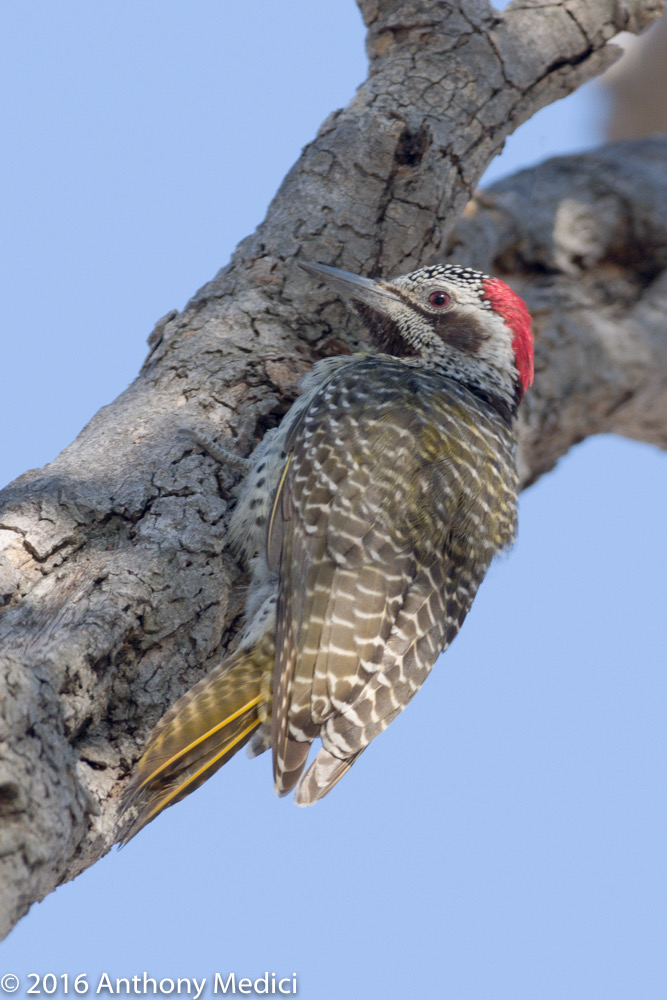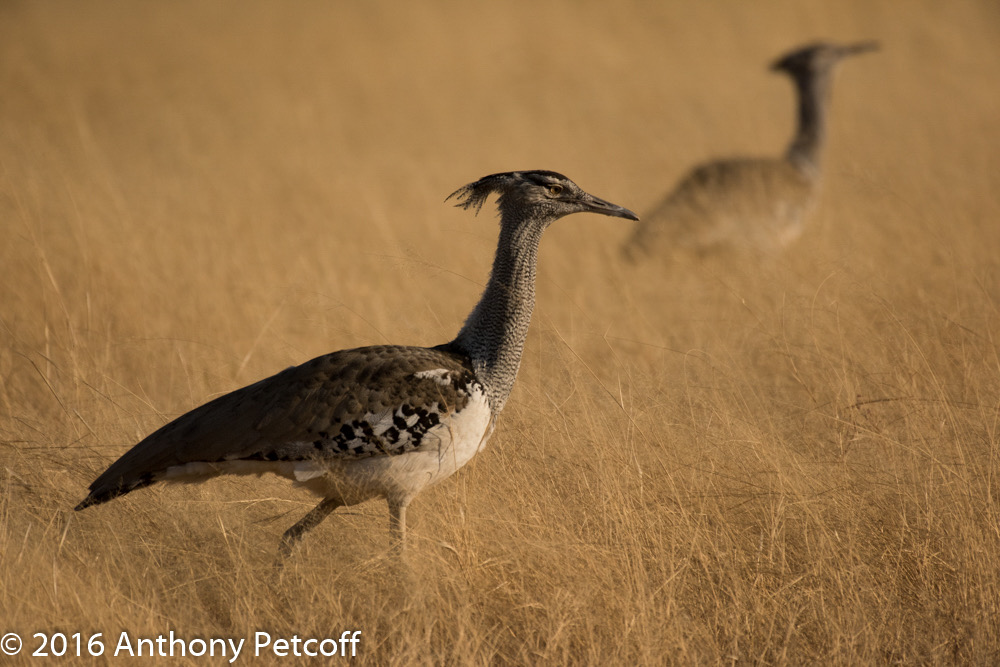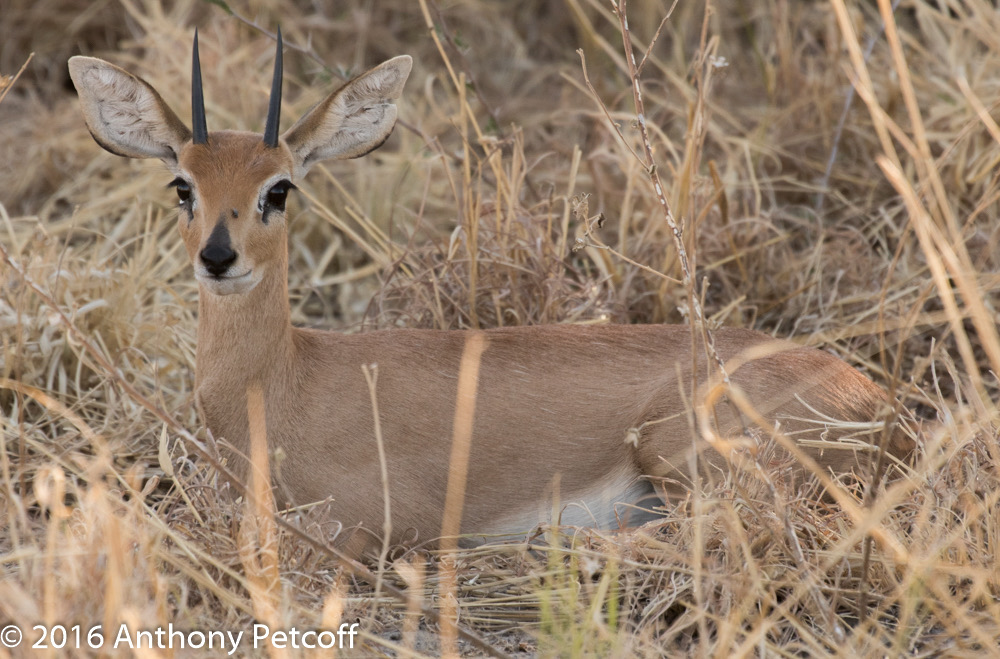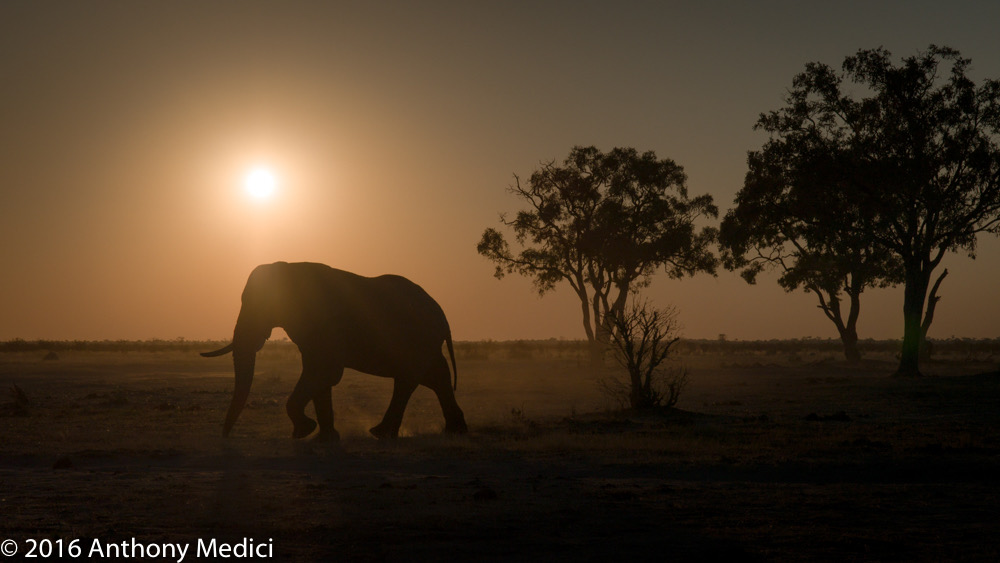I’m just going to describe my day, mostly because the vehicles were all still quite scattered today, and I’m not privy to all the stories the students were seeing.
First thing in the morning my vehicle went to one of the two sources of water available to animals in Savute this year (both of them pumped in by the park service). There is no marsh this year. There is no flowing river. There is no large rain-filled pans.
When all you have are a couple of small pans with water for such a large area, what happens is each pan becomes a day full of animals sequencing their daily intake needs. Experience tells me this: the elephants will start coming as the day heats up, and once the elephants are at the water holes, they dominate them to the point where you don’t get much of anything else. Moreover, Savute has such a huge elephant population, that will continue right up through sunset.
Nothing wrong with photographing elephants at a water hole, of course, but I also know I can do that pretty much any time after about 11am, sometimes earlier.
So for me, I want to see what’s at the watering hole before the elephants take it over. This morning that was a pair of jackals.

Fortunately, these jackals were very cooperative, and spent plenty of time doing jackal-around-water things. But they were also paranoid, running back and forth to make sure no competitor was coming. Curiously, the guinea fowl paid virtually no attention to the jackals. I would have thought that jackal would see them as a nice meal, but apparently not.
By the time we were through with the Jackals’ morning water rituals, we’d heard a call of “leopard” over the radio. This particular leopard was sitting between Leopard Rock and Two Hills, so we rushed over to go grab some shots. I personally expected that as the day was heating up, the leopard would move from that area, as it’s exposed to the heat. It’s getting pretty darned warm in the middle of the day now, to the point of wearing shorts and a t-shirt.
Now the interesting thing about this leopard is that it was sitting at almost the exact center inside a circular area bounded by roads, but far enough away that we couldn’t shoot it clearly. In other words, right in the middle of lots of brush and bush:

That shot is about the best I could do (D500 and 200-500mm), and that only happened for a brief few moments when the leopard moved out into the sun. Most of the time it tucked itself back at the base of some bushes to get shade.
What you don’t see in this image is the National Geographic vehicle sitting just off to the left. There are currently two NatGeo vehicles in Savute, one shooting leopard, the other being manned by Shane’s roommate and shooting lion. (How do we get notice of where the predators are? I think you just figured it out.)
These vehicles have off-road permits. So the NatGeo leopard crew is sitting where they have a good view of the leopard, but they’re not shooting. Leopards laying down aren’t all that interesting and you don’t need a video camera to shoot that ;~). But the fact that they’re where they’re at tells me that they too expected this leopard to continue its route back to Leopard Rock.
I’m a patient guy—my mom doesn’t think so—thus we pretty much stayed with this leopard all morning. Every now and again we’d get a semi-clear shot like the one above (which is croppable to something almost usable), most of the time we just sat watching shadows at the base of a bush.
Eventually lunch beckoned, and we headed back to camp. In the afternoon, I switched vehicles—students stay in the same vehicle all day, which is how Tony and I manage to make sure everyone has at least a half day every day with one of us—but I continued my siege of the leopard.
Same result. That leopard did the same thing, just as far away from us as before. The NatGeo folk were still there, but one was reading a book, the other catching a nap.
We tried going around the circle of road to find better angles. Nada.
We sat for hours waiting for the leopard to do something. Nada.
We took pictures of shadows at the base of bushes. Nada.
But that’s the way it is sometimes. One leopard in a bush is better than two leopards who knows where. Since everyone hasn’t gotten a leopard shot yet, I have great cooperation from the students, but I would have probably tried to sit here all day because it’s the right thing to do. If someone wants a photograph of any bird, prey, elephant, hippo, et.al., I can pretty much guarantee that we can get that for you tomorrow. We might not find this leopard again if it decides to run out to the edge of its territory tonight.
So we sit.
And we talk.
And we twiddle our thumbs.
Actually, it’s not that bad. Down time like this is a good time to talk about camera settings and technique, and so we do some of that, too.
But aw, shucks, the sun has gone down and this leopard is still not moving. And we have to move to get back to camp. We keep hoping that the now much cooler early evening temps will get this cat back up and hunting, but she’ll have nothing to do with that.
So we head back to camp. We get maybe a quarter mile down the road and…
Bam, leopard.
Not the same leopard we had been sitting watching doing nothing, but a young male moving out of an inaccessible area over to Leopard Rock (getting an idea why it’s called that?).


That’s the way it is sometimes. You get skunked out on what you were trying to do and then Africa throws you a bone.
I should point out that there’s no light whatsoever to take these images. Note the forward paw on the bottom image: I’m at f/2.8 (70-200mm), 1/125 and ISO 6400. I’ve pushed the D7200 about as far as I really want to go.
Almost immediately the leopard darts across the road, runs up and over a rock, and completely disappears. So four or five hours of sitting was rewarded with maybe 15 seconds of leopard action, and not even the same leopard.
Meanwhile, looking over the other photos I have available to me tonight—for some reason I have very few images submitted for this day, even from the vehicles that weren’t leopard sitting—I see that Tony was still mostly in bird mode:




But he and others did manage to get a few things other than birds:




Since my tracks aren’t very interesting, here’s Tony’s tracks for the day (over 25 miles worth):
